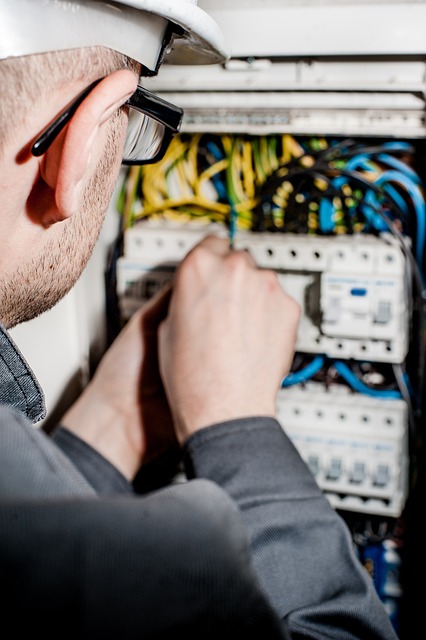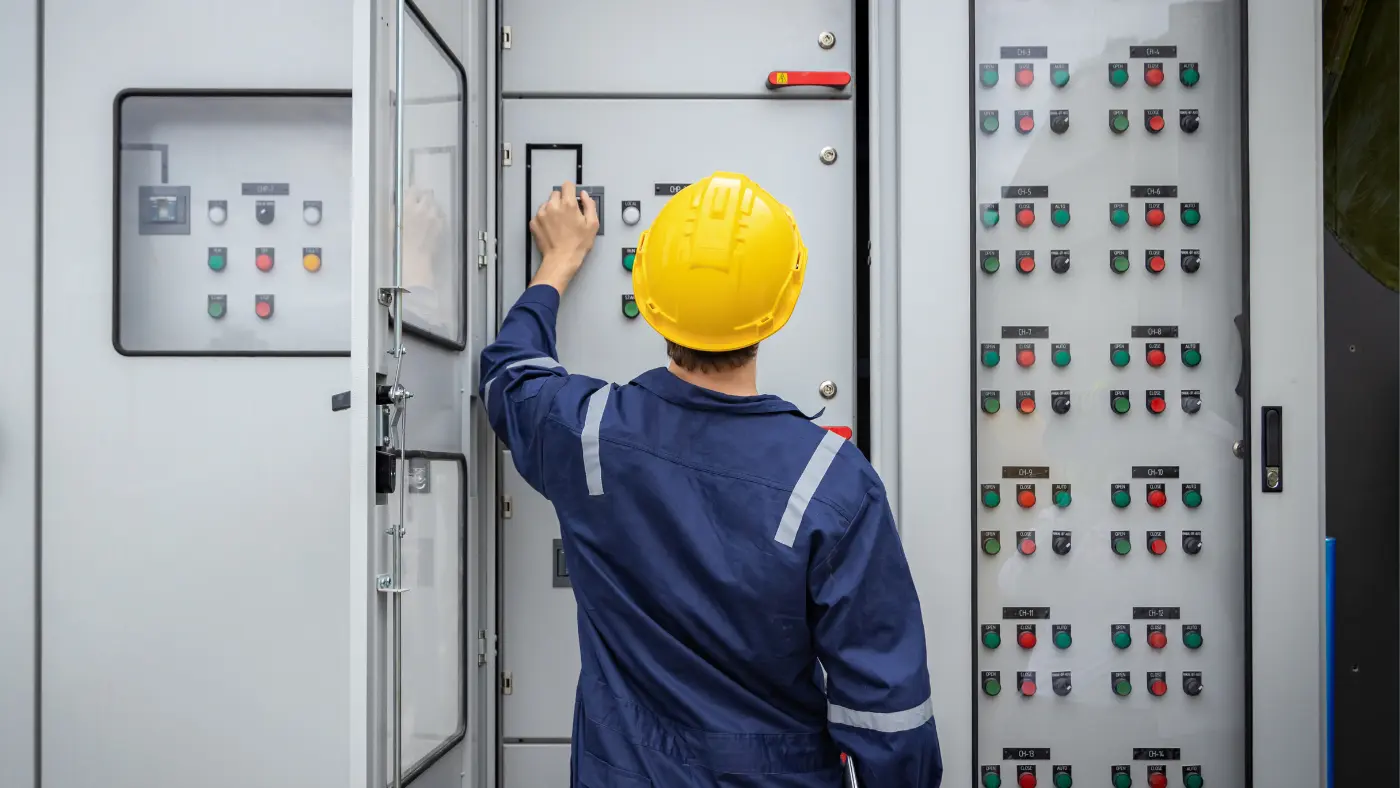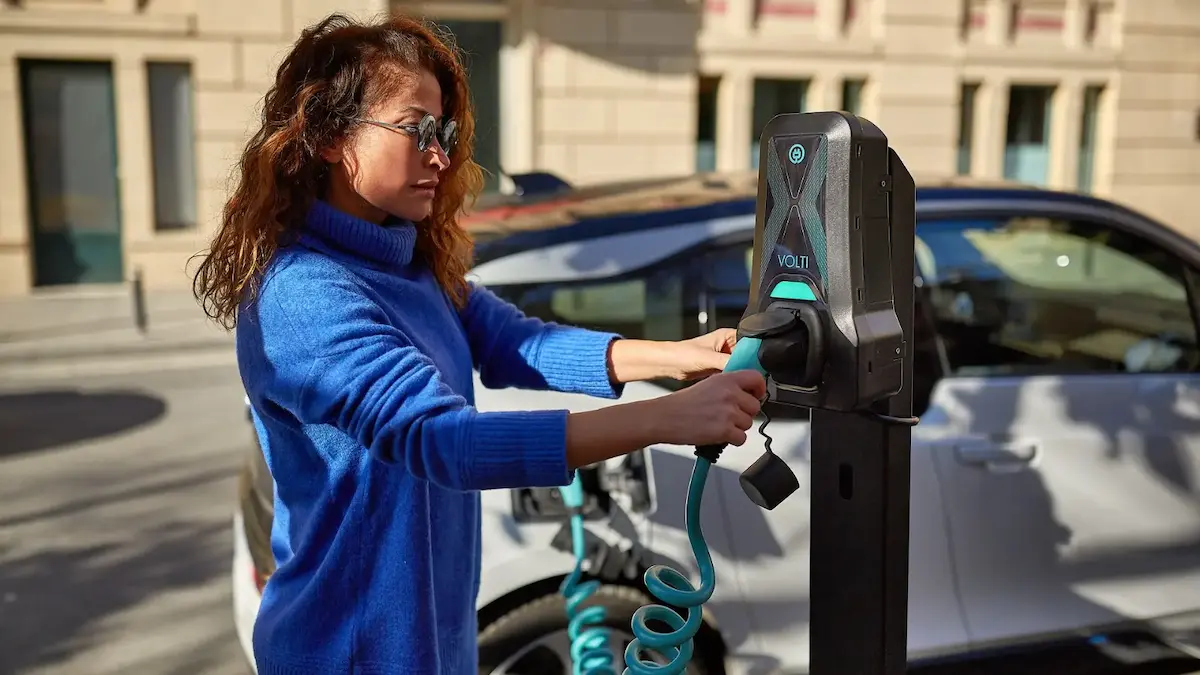EV Charging Station Site Survey & Installation
VoltiNet guides you at every step. We provide custom EV charging infrastructure, installation, and project plans designed specifically for you. Our mission is to ensure the seamless planning, installation, and reliable ongoing operation of your EV charging infrastructure from start to finish.
With our expert team, we bring power to your home and business.

Site Survey Services
Our teams of specialists provide energy consulting, on-site assessments, and technical support for all your personal and commercial EV charging needs. Contact us today to determine the ideal charging solution for your home or business.

Installation Services
After the initial survey, our VoltiNet experts support you through the entire process: from managing your subscription and engineering power upgrade plans to handling utility applications, infrastructure setup, final installation, and system commissioning.
Site Survey, Installation, and Configuration Processes
Installing an electric vehicle charging station consists of three key stages: Site Survey, Installation, and Configuration. In this article, we will delve into these processes in detail, providing explanations that are clear for newcomers while also offering the nuanced details that experienced professionals will appreciate.
Installing an EV charging station is a process that requires careful planning and execution. During the site survey phase, the correct location must be chosen, infrastructure analyzed, and the right device selected. The installation phase must meticulously carry out mounting, testing, and configuration. Once all these stages are complete, users will have a reliable charging station tailored to their needs.
1. Site Survey Phase
In the site survey phase, the technician must select the most suitable location, infrastructure materials, and device based on the capacity of the area where the stations will be installed. Based on these selections, they calculate the cost and prepare a survey report for approval.
1.1. Location Selection
The first step in installing an EV charging station is to choose a suitable location that is easily accessible, secure, and has sufficient electrical infrastructure. We can explain the factors that directly or indirectly affect the station’s usage in more detail below:
-
Ease of Access: The charging station should be in a visible location where EV users can physically park their vehicle next to it and easily reach both the vehicle and the station with the charging cable. This could be in a high-traffic area or locations like shopping mall parking lots, with clear signage if needed.
-
Power Source: The distance from the charging station location to the electrical panel will increase cable costs, labor, and commissioning time. Therefore, the station should be positioned in the most visible, accessible, and closest possible location to the energy panel.
-
Security: The station’s security is important for both users and the equipment. An area with sufficient lighting, preferably monitored by cameras, and protected from extreme heat and humidity should be chosen.
1.2. Infrastructure Analysis
After the location is selected, a detailed analysis of the electrical infrastructure must be performed. The first step in this phase is to check the contracted capacity.
-
Contracted Capacity is the maximum electricity power a consumer can draw over a specific period, as stated in their contract with the electricity supplier. It is usually expressed in kilowatts (kW). Exceeding this capacity can lead to extra charges for the subscriber and potential damage to the electrical installation, so it must be monitored carefully.
-
If the contracted capacity is insufficient, contact must be made with the local electricity distribution company to check the installed capacity. If the installed capacity is sufficient, a formal request can be made to the local electricity company to increase the contracted capacity to match the total power required by the EV charging stations.
-
If the installed capacity is also insufficient, it must be requested from the local electricity company, or a private investment must be made to increase power at the substation.
-
Charging stations are manufactured with two options: single-phase and three-phase, based on customer needs. Three-phase is preferred for faster charging. During the survey, it is crucial to check whether the customer’s subscription is single-phase or three-phase. While three-phase power is generally supplied by the utility, older buildings or residential properties converted to commercial use might have a single-phase line. Care must be taken in this regard, and if necessary, the entire electrical infrastructure and subscription must be upgraded.
1.3. Device Selection
Finally, suitable devices for the charging station must be selected. There are two main types of charging stations: AC fast chargers and DC high-speed chargers.
Connection ports come in types like Type 1, Type 2, CCS2 Combo, CHAdeMO, etc. These can vary by country and vehicle manufacturer. Turkey uses the European standard Type 2 AC connector and CCS2 Combo DC connector.
When selecting a device, AC or DC stations should be chosen based on the charging frequency and density of customers at the location. For example:
-
AC stations can be preferred in apartments, residences, and schools where there is no intense charging demand.
-
DC stations can be chosen for locations with high vehicle turnover and demand, such as intercity roads, rest stops, and shopping malls.
2. Installation Phase
After the locations, types, and quantities of the stations are determined in the survey phase, electrical cables (with varying cross-sections depending on the device type and power capacity) and CAT6 Ethernet cables (to provide internet access) are laid to the device locations before mounting.
2.1. Device Mounting
After the devices are selected, the physical installation of the charging unit begins. Ensure there is sufficient space around the station, it is visible, and it is mounted at a reasonable height for users to access comfortably.
After the physical installation is complete, electrical connections are made, linking the charging device to the power source. Appropriate cabling and fuse systems must be used according to whether it’s a three-phase or single-phase connection.
2.2. Testing Phase
After installation is complete, the device’s functionality must be tested. This phase includes power and connection tests. First, it is checked with a simulation device whether the unit is receiving power correctly from the source. Following this, the charging process is tested by connecting different electric vehicles to ensure it works flawlessly.
3. Configuration Phase
All installed stations must be connected to a central CMS (Chargepoint Management System) server to enable charging operations via a mobile application. Therefore, power is supplied to the mounted devices and their network connections are checked.
If their software is outdated, the authorized person is notified, and the device software is updated. The necessary parameters for connection—the web socket address and device ID—are defined. The device is then prepared for charging operations.
3.1. Software Update
The configuration phase begins with updating the charging station’s software. While stations have the latest tested firmware from serial production, the installed software version must be checked. If it is not current, the latest software is installed. Most modern charging stations have software capable of receiving remote updates, which are crucial for enhancing performance and adding new features. During the update process, ensure the device is connected to the internet.
3.2. Entering Device Information
After any software updates, configuration of the charging station begins in the CMS server interface. The following information is entered:
-
Device ID number (essential for remote monitoring and management)
-
Device name
-
Installation address and location data
-
Charging station type and connector type
-
Socket number obtained from the energy regulatory authority (EPDK)
-
Maximum power draw
-
Photo (if available)
-
Operating hours
-
QR code (if available)
-
Information about nearby facilities (e.g., shopping malls, hotels)
Subsequently, the configuration of payment systems (such as card readers, mobile payments, etc.) is completed to allow users to pay according to the defined pricing policy.
Once all definitions are made, a matching connection is established between the charging device on-site and the CMS server. The station is then ready for charging operations.
3.3. User Interface Settings
Finally, for EV charging stations with displays, the user interface settings must be configured. The device’s screen should have a user-friendly interface. Information such as charging time, cost, power drawn, and device status must be presented clearly.


 Türkçe
Türkçe


